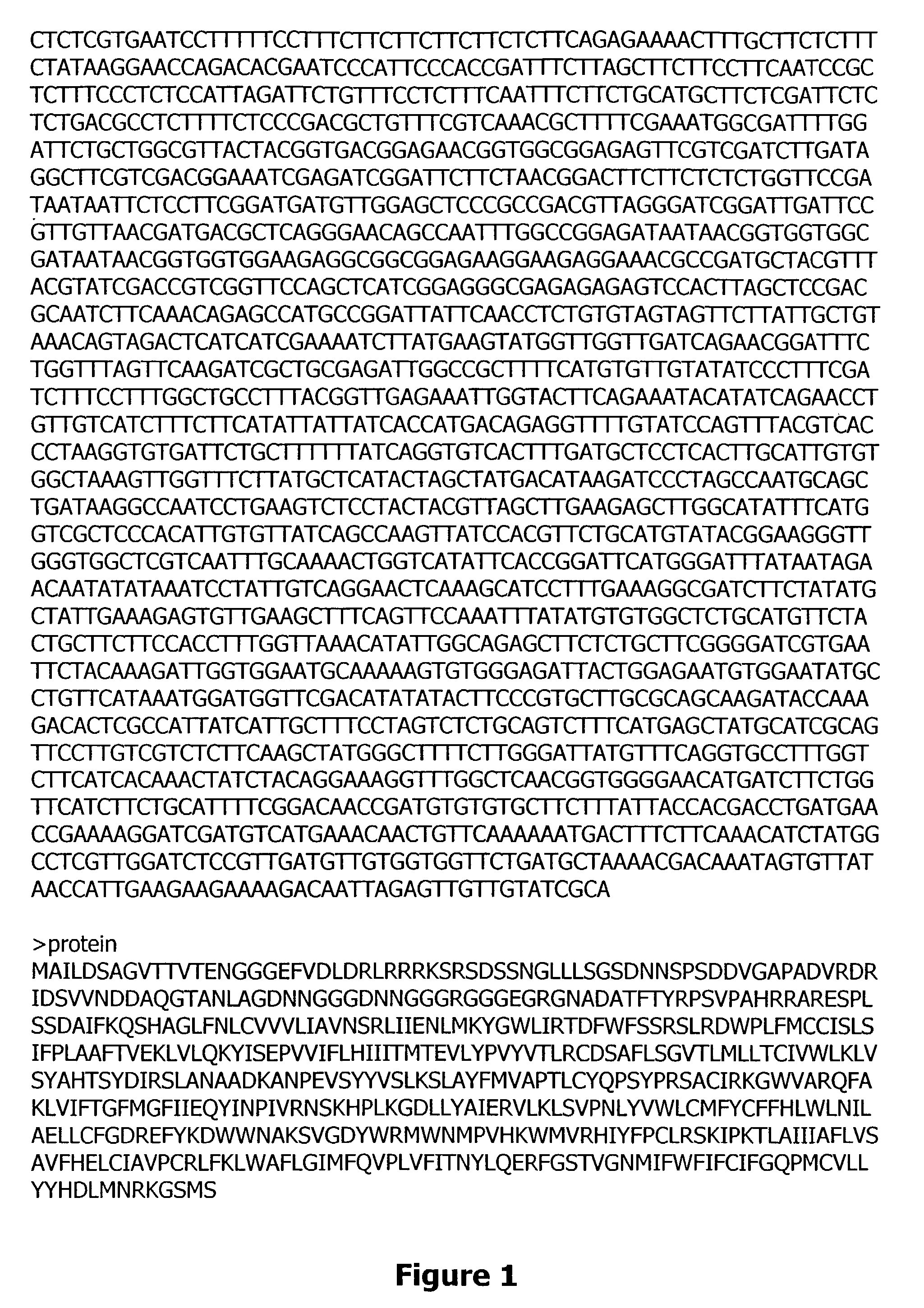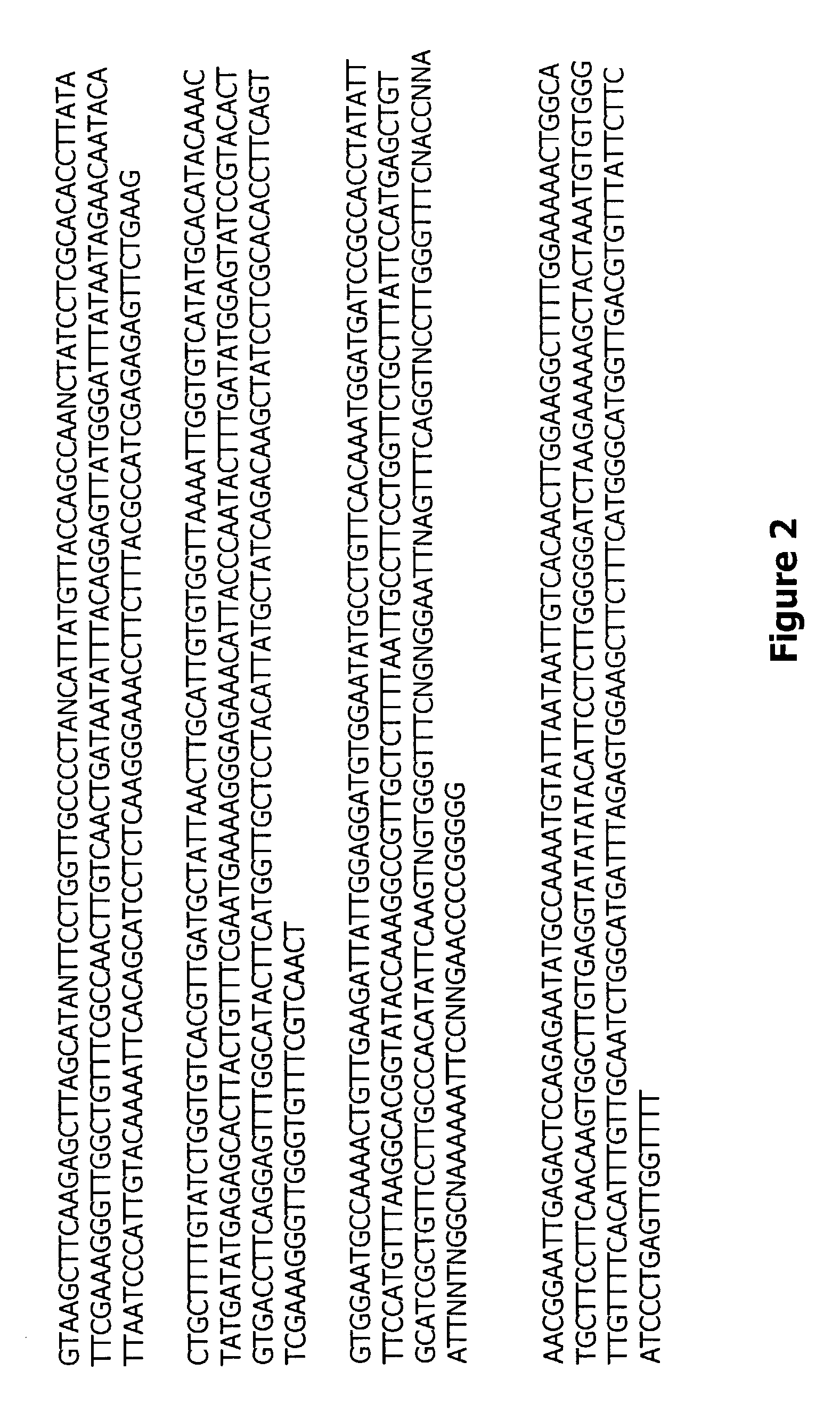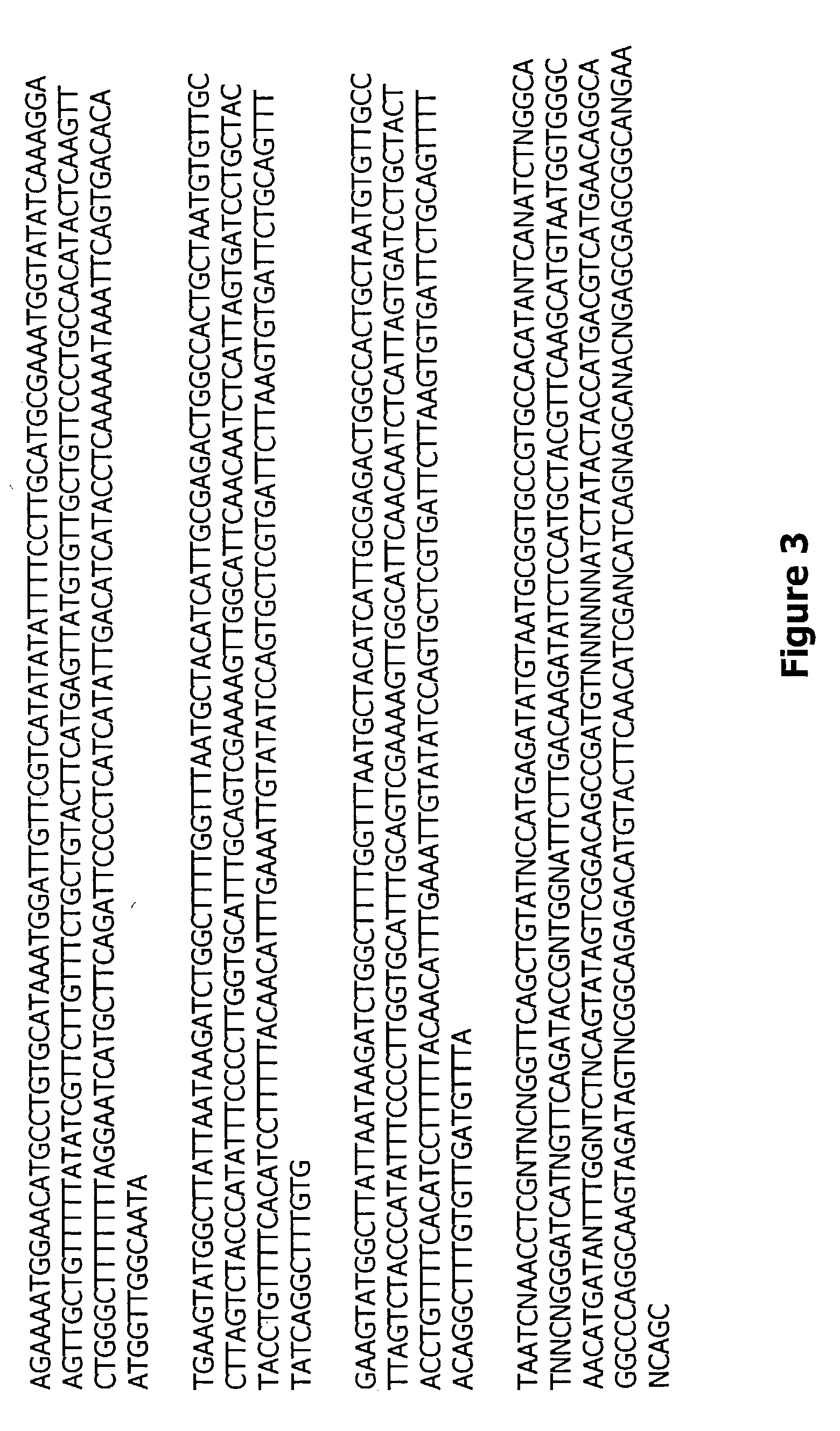Acyl CoA:cholesterol acyltransferase related nucleic acid sequences
acyl coa and acyl coa technology, applied in the field of nucleic acid and amino acid sequences and constructs, can solve the problems of limited number of useful nucleotide sequences for the engineering of such characteristics, and the speed with which new useful nucleotide sequences for engineering new characteristics are slow, so as to inhibit or delay the germination of seeds
- Summary
- Abstract
- Description
- Claims
- Application Information
AI Technical Summary
Benefits of technology
Problems solved by technology
Method used
Image
Examples
example 1
RNA Isolations
[0131]Total RNA from the inflorescence and developing seeds of Arabidopsis thaliana is isolated for use in construction of complementary (cDNA) libraries. The procedure is an adaptation of the DNA isolation protocol of Webb and Knapp (D. M. Webb and S. J. Knapp, (1990) Plant Molec. Reporter, 8, 180–185). The following description assumes the use of 1 g fresh weight of tissue. Frozen seed tissue is powdered by grinding under liquid nitrogen. The powder is added to 10 ml REC buffer (50 mM Tris-HCl, pH 9, 0.8M NaCl, 10 mM EDTA, 0.5% w / v CTAB (cetyltrimethyl-ammonium bromide)) along with 0.2 g insoluble polyvinylpolypyrrolidone, and ground at room temperature. The homogenate is centrifuged for 5 minutes at 12,000× g to pellet insoluble material. The resulting supernatant fraction is extracted with chloroform, and the top phase is recovered.
[0132]The RNA is then precipitated by addition of 1 volume RecP (50 mM Tris-HCL pH 9, 10 mM EDTA and 0.5% (w / v) CTAB) and collected by ...
example 2
Identification of ACAT Sequences
[0133]Since plant ACATs are unknown in the art, searches are performed to identify known and related ACAT sequences from mammalian sources from public databases. These sequences are then used to search public and proprietary EST databases to identify plant ACAT-like sequences.
[0134]A public database containing mouse Expressed Sequence Tag (EST) sequences (dBEST) is searched for ACAT-like sequences. The search identified two sequences (SEQ ID NOs:12 and 13) which are related (approximately 20% identical), but divergent, to known ACAT sequences.
[0135]In order to identify ACAT-like sequences from other organisms, the two mouse ACAT sequences are used to search public and proprietary databases containing EST sequences from human and rat tissues. Results of the search identified approximately 180 sequences from the human database, which were assembled into a complete inferred cDNA sequence (FIG. 7) (SEQ ID NO:14) and approximately 35 from the rat database,...
example 3
Sequence Comparisons
[0147]Sequence alignments between ACAT sequences from several different sources are compared to identify the similarity between the sequences. Nucleotide sequences from known human and mouse ACATs, as well as nucleotide sequences from known yeast ACATs are compared to the ACAT-like EST sequences from human and Arabidopsis.
[0148]Analysis of the sequence alignments reveals several classes of ACATs based on sequence similarity. The known human and mouse ACATs, being 88% similar in the nucleotide sequence, form one class of ACATs. Another class of ACATs includes the yeast ACATs which are less than 20% similar to the known human and mouse class ACATs.
[0149]The final class of ACATs includes the Arabidopsis (FIG. 1)) (SEQ ID NO:1) and human (FIG. 7)) (SEQ ID NO:14) sequences disclosed in the present invention. This class is approximately 22% similar to the known human and mouse ACAT class and approximately 23% similar to the yeast class of ACATs. Thus, the ACAT sequenc...
PUM
| Property | Measurement | Unit |
|---|---|---|
| Nucleic acid sequence | aaaaa | aaaaa |
| Antisense | aaaaa | aaaaa |
Abstract
Description
Claims
Application Information
 Login to View More
Login to View More - R&D
- Intellectual Property
- Life Sciences
- Materials
- Tech Scout
- Unparalleled Data Quality
- Higher Quality Content
- 60% Fewer Hallucinations
Browse by: Latest US Patents, China's latest patents, Technical Efficacy Thesaurus, Application Domain, Technology Topic, Popular Technical Reports.
© 2025 PatSnap. All rights reserved.Legal|Privacy policy|Modern Slavery Act Transparency Statement|Sitemap|About US| Contact US: help@patsnap.com



